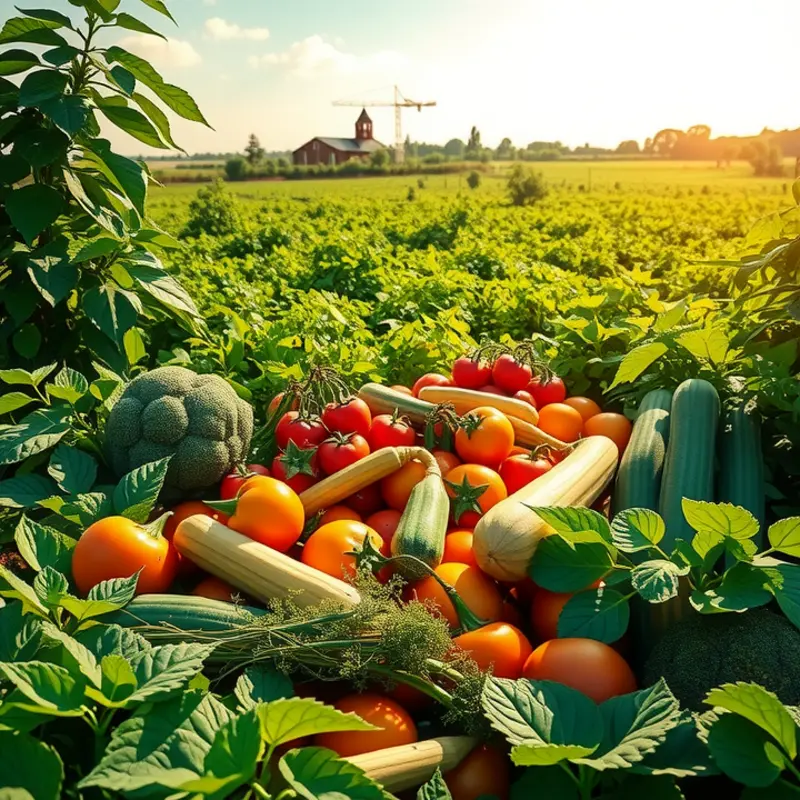Creating delightful dishes often requires a binding agent, and gelatin is a common choice. However, not everyone can or wants to use traditional gelatin due to dietary preferences or restrictions. Fortunately, nature provides a bounty of alternatives that can replicate gelatin’s properties while accommodating various lifestyles. This guide will explore natural substitutes that serve as effective gelling agents, catering to home cooks and the dietary-conscious.
Exploring Plant-Based Gelling Agents

Gelling agents from the plant kingdom offer a versatile and sustainable alternative to gelatin. Home cooks are increasingly turning to these substitutes to craft dishes that are both delicious and environmentally friendly. Understanding each gelling agent’s properties and best uses is crucial for achieving the desired texture in recipes.
One of the most popular plant-based gelling agents is agar-agar. Derived from red algae, agar-agar is often utilized in Asian desserts but has expanded its reach into various culinary applications. Unlike gelatin, agar-agar does not require refrigeration to set and stays firm at room temperature. To use agar-agar, dissolve one teaspoon of powder in one cup of liquid by bringing the mixture to a boil and then allowing it to simmer for a few minutes. This reliable thickener is perfect for salads, mousses, and even vegan cheese.
Another viable option is carrageenan, which comes from red seaweed. Carrageenan is widely used for its thickening and stabilizing properties in dairy products, but it can also be utilized in vegan versions of panna cotta and yogurt. Typically, a half teaspoon is sufficient for one cup of liquid. When using carrageenan, it’s important to choose the right type: kappa carrageenan for gel-like textures and iota carrageenan for softer results.
For those seeking a neutral flavor, pectin is an ideal choice. Common in fruit jellies and jam-making, pectin is a plant-derived carbohydrate found in fruits like apples and citrus. To achieve the perfect set, pectin needs sugar and acid, making it less ideal for savory dishes. However, it’s excellent for crafting rich fruit spreads and glazes.
Another alternative is tapioca starch, extracted from the root of the cassava plant. This versatile thickener is best used in recipes where a chewy texture is desired, like in puddings or fruit pies. Tapioca starch is sensitive to prolonged heat; thus, add it towards the end of cooking to prevent over-thickening.
Kudzu root starch is a less common but highly effective thickener. Known for its medicinal properties, kudzu offers a transparent, smooth finish and is perfect for sauces and soups. Use one tablespoon per cup of liquid and stir constantly over low heat until it thickens.
Choosing plant-based gelling agents not only supports a healthier lifestyle but also aligns with more sustainable practices. The production of these substitutes tends to be less resource-intensive compared to animal-derived gelatin, making them a kinder choice for the environment. For more insights on eco-friendly cooking practices, such as eco-smart kitchen storage, consider exploring the integration of these agents in various culinary applications.
Incorporating plant-based gelling agents into your cooking routine requires a bit of experimentation. By understanding their unique properties, you can create exquisite dishes that respect both your health and the planet.
Utilizing Fruit and Starch-Based Substitutes

Natural gelatin alternatives offer an exciting way to create delicious dishes while enhancing nutritional content. Fruits and starches like pectin, chia seeds, and mashed bananas can substitute gelatin beautifully.
Pectin: The Natural Thickener
Derived from apples and citrus fruits, pectin works wonders in jams and jellies. Its ability to gel relies on sugar and acid presence, essential in achieving the desired set. A general guideline is to use about five grams of pectin per hundred grams of fruit. Pectin is an excellent choice for blood sugar management, providing the added benefit of dietary fiber.
Chia Seeds: Tiny Powerhouses
Chia seeds swell upon absorbing liquid, creating a gel-like consistency. They’re perfect for puddings or as egg replacements in baking. For a basic chia pudding, combine a quarter-cup of chia seeds with a cup of any milk. Allow it to sit overnight for a creamy, dense pudding. These seeds are rich in omega-3 fatty acids, making them a heart-friendly choice. Explore a guide to minimal prep dinner ideas to integrate chia seeds into your evening routine effortlessly.
Bananas: Versatile and Flavorful
Mashed bananas add moisture and a mild sweetness to desserts. They can effectively thicken muffins, pancakes, or quick breads. Use them to replace part of the liquid in recipes; one medium banana replaces about half a cup of liquid. Bananas boast potassium and vitamins B6 and C, contributing to increased energy and improved mood.
Arrowroot and Cornstarch: Traditional Starches
These starches act as thickeners when heated with liquids. Arrowroot is particularly suited to acidic sauces, while cornstarch shines in soups and gravies. Typically, a tablespoon of either starch can replace one tablespoon of gelatin. These are gluten-free alternatives that offer a neutral taste, allowing other flavors to shine.
Adjusting Techniques
When using fruit or starch-based substitutes, remember to adjust liquid ratios. These alternatives often require less water, helping avoid dilution of flavors. Experimentation is key: trial and error will bring you closer to perfect consistency while retaining flavors.
Each of these substitutes brings its unique characteristics to the culinary table. Pairing them with complementary flavors can enhance their impact. Natural gelatin alternatives not only respect dietary restrictions but also enrich your dishes with diverse textures and flavors. Embracing these options means embracing a more health-conscious, flavorful cooking journey.
Final words
Natural gelatin substitutes offer versatile solutions for home cooks who wish to explore healthy alternatives without compromising texture or flavor. Whether using plant-based agents like agar-agar or relying on the innate gelling properties of fruits and starches, each option opens the door to creative and mindful cooking. As you transition to these alternatives, you’ll not only broaden your culinary skills but also embrace a lifestyle that is more attuned to your dietary needs and environmental impact.







